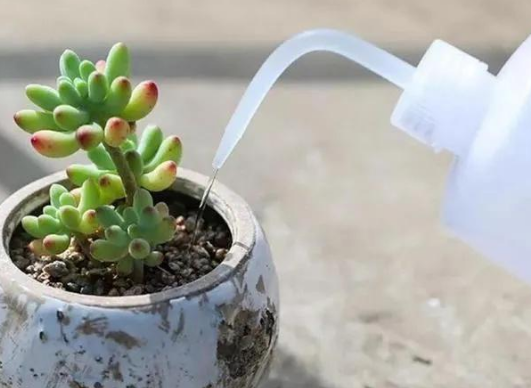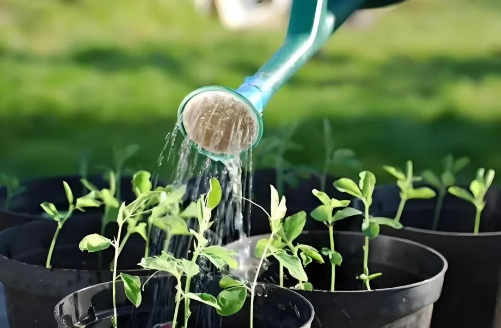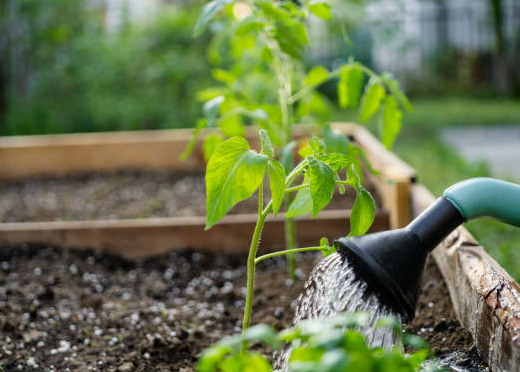01 Different Flowers Have Different Watering Needs
Watering should be adjusted according to the type of flower, the plant’s condition, the season, and other factors. Just like any other task in flower care, successful cultivation requires attention to detail. To grow strong and healthy plants, it’s important to follow the plant’s growth patterns, observe carefully, and continuously improve the care approach. Only with such effort can one raise flourishing flowers.

-
Flower Type: Different flowers have different water needs. For example, aquatic plants need water all the time, while succulents should be watered once a week, and foliage plants generally need to keep the soil slightly moist.
-
Plant Condition: Young plants or newly propagated ones are more sensitive to drought, while older, well-established plants can tolerate dry conditions better.
-
Growing Location: Flowers placed outdoors typically need more water, whereas those kept in greenhouses need less water.
-
Seasonal Changes: In hot, dry summer months, plants need more water. During the cold winter, plant growth slows, and transpiration decreases, so watering should be reduced. In autumn and winter, many plants that aren’t cold-resistant should be moved indoors to avoid frost. However, improper watering can cause plants to drop leaves, grow excessively, or even die. Thus, the timing of watering is crucial, with the best time being sunny mornings, and it’s best to avoid watering in the evening. Also, large plants need more water, while small pots should be watered more frequently. When moving plants indoors, it’s essential to wait until the soil surface is dry before watering. Even plants that prefer moist soil, like Calla lilies or begonias, should not be watered until the surface is dry. For plants that thrive in dry environments, like aloe or cacti, wait until the soil is thoroughly dry before watering.
02 Scientific Watering Is Key to Success
When watering, pay attention to the following “Five Factors”:
-
Water Quality: Natural rainwater is ideal. Tap water often contains purifying agents and chlorine, which can be harmful to plants. It’s best to let tap water sit for a day or two to let the chlorine dissipate. Alternatively, you can add a vitamin C tablet to neutralize the chlorine. Water from boiled eggs, tea, fermented rice water, or fish tank water can also be rich in nutrients beneficial to plants. Recently, magnetized water and laser-treated water have become popular for watering plants.
-
Water Temperature: The temperature of the water should be as close as possible to the soil temperature. A large temperature difference between the soil and water can damage the plant roots. The best way is to store water near the plants in a shallow basin to allow it to naturally adjust to the surrounding temperature. The difference between water temperature and soil temperature should be kept under 5°C to avoid root damage.
-
Time: Watering requirements change with the seasons. In spring, as plants begin to sprout and root, they need more water to keep the soil moist. In summer, high temperatures and rapid evaporation require more frequent watering. In autumn, watering should be reduced, and in winter, many plants are dormant and need only minimal moisture.
-
Flower Pot: Watering should be adjusted according to the size, depth, and material of the pot. Small, shallow pots require more frequent watering. Clay pots dry out quickly, so they need regular watering, while glazed or ceramic pots retain moisture longer and should not be watered too often.
-
Plant Type: Different flowers have different water needs, so watering must be tailored. For example, cactus and aloe require minimal watering as their roots are not very developed. Plants with dense leaves, like begonias or gloxinias, should not be watered on the leaves as the water tends to get trapped and could cause rot. Some plants, like crape myrtle or jasmine, require less frequent watering during the blooming season to promote flowering. Newly pruned plants should also be watered less to prevent excessive leaf growth, which can affect the shape.

03 Understanding Watering Needs of Different Plants
Just like any crop, flowers are very sensitive to water. Here are some guidelines:
-
Different Flower Types, Different Watering Needs:
-
Wet-loving plants: For plants like irises or Calla lilies, which thrive in wet conditions, watering should be “wet, not dry.”
-
Drought-resistant plants: Plants like cacti, which can store water in their leaves, need to be watered with the principle of “dry, not wet.”
-
Semi-drought-resistant plants: Plants like camellias or azaleas, which have waxy or hairy leaves, require the principle of “dry to the bone, water thoroughly.”
-
Moderate moisture plants: For plants like roses or pomegranates, watering should be “when dry, water moderately.”
-
Aquatic plants: Plants like lotuses or water lilies need a “constant supply of water.”
-
-
Adjust Watering Quantity Based on Time:
-
For young plants or flowering plants, watering should be controlled to avoid excess moisture.
-
During summer, increase watering frequency, while in winter, water less or only when the soil is dry.
-
Larger pots need more water, while smaller ones need less.
-
During dry, hot weather, more frequent watering is needed. On rainy days, no watering is necessary, and it’s essential to drain any stagnant water in the pot.
-
-
Improve Watering Quality and Proper Application:
-
Water quality is crucial. Avoid using polluted water or direct tap water. Let water sit for 2-3 days before use.
-
Watering should generally be done at the base of the plant. For foliage plants, occasional misting is okay, but flowering plants should not be misted, as it can cause rot.
-
Avoid watering during midday in extreme heat to prevent shocking the plant with a sudden temperature change.
-
04 Common Watering Mistakes
-
Overwatering: Many people, especially those who are particularly fond of certain plants, tend to overwater out of fear of the plant dying. This can lead to root rot due to insufficient oxygen in the soil.
-
Shallow Watering: Sometimes, people water only the surface of the soil, leaving the deeper layers dry. This is a common mistake that leaves plants without enough water at the roots.
-
Inconsistent Watering: Some people only water when they remember, leading to uneven watering. This can result in either dried-out plants or plants that suffer from root rot.
-
Ignoring Plant Needs: Watering plants uniformly without considering the plant type, growth stage, or the local climate is a common mistake. This neglects the fact that different plants have different watering requirements.
05 Watering Considerations
Watering is a delicate process that must be done with care. The following guidelines can help:
-
Check Moisture: Test the soil moisture and observe the condition of the plant. Healthy plants should have sturdy stems and vibrant leaves.
-
Feel the Soil: Check the soil’s texture and consistency with your fingers. Soil should not be too compact or too loose.
-
Listen for Sound: Gently tap the sides of the pot with your finger. A dull sound indicates that the soil is wet, while a clear sound means it’s dry.
-
Proper Watering: Water the plant thoroughly, ensuring the soil is evenly moist, without leaving excess water in the pot. Avoid “half-watering” where only the surface is moistened.

06 Everyday Watering Tips
Many flower lovers have the good habit of using leftover water from washing dishes or vegetables for watering plants. However, these practices can harm the plants in the long run.
-
Avoid Using Soapy or Oily Water: Water with soap or oil residues can harm the soil, alter its pH, and may even kill the plants.
-
Avoid Watering at Noon in Summer: The high temperature can cause the plant roots to be shocked by the sudden cold water, which could harm them.
-
Do Not Spray Fuzzy-Leaved Plants: Plants with fuzzy leaves (e.g., begonias) should not be misted as the water will not evaporate quickly and can lead to fungal infections.
-
Do Not Overwater During Flowering: Excessive watering during the blooming period can cause flower petals to rot and reduce fertilization, thus lowering the chance of successful seed formation.
-
Avoid “Half-Watering”: Make sure the water reaches the bottom of the pot, ensuring the roots receive adequate moisture.
07 Watering in Different Settings
Balcony Plants: Plants grown in pots on a balcony tend to dry out faster than those planted in the ground. Beginners often overwater, but this can be fatal. Learn to adjust watering based on weather and the plant’s needs.
-
Water Quality: In cities, use tap water stored for a day or two to let the chlorine dissipate. Rainwater is ideal.
-
Water Temperature: Water should be close to the temperature of the surrounding air to prevent shock.
-
Watering Quantity: Consider the plant’s habits, the weather, and the pot size. Water more frequently for moisture-loving plants, and less for drought-resistant ones.
08 Summer Watering for Potted Plants
In summer, plants require frequent watering due to the heat and evaporation. However, you should avoid watering too much, as it could lead to root rot. Always check the soil moisture and adjust watering accordingly.

